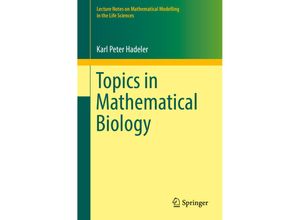This book analyzes the impact of quiescent phases on biological models. Quiescence arises for
example when moving individuals stop moving hunting predators take a rest infected
individuals are isolated or cells enter the quiescent compartment of the cell cycle. In the
first chapter of Topics in Mathematical Biology general principles about coupled and quiescent
systems are derived including results on shrinking periodic orbits and stabilization of
oscillations via quiescence. In subsequent chapters classical biological models are presented
in detail and challenged by the introduction of quiescence. These models include delay
equations demographic models age structured models Lotka-Volterra systems replicator
systems genetic models game theory Nash equilibria evolutionary stable strategies
ecological models epidemiological models random walks and reaction-diffusion models. In each
case we find new and interesting results such as stability of fixed points and or periodic
orbits excitability of steady states epidemic outbreaks survival of the fittest and speeds
of invading fronts. The textbook is intended for graduate students and researchers in
mathematical biology who have a solid background in linear algebra differential equations and
dynamical systems. Readers can find gems of unexpected beauty within these pages and those who
knew K.P. (as he was often called) well will likely feel his presence and hear him speaking to
them as they read.



